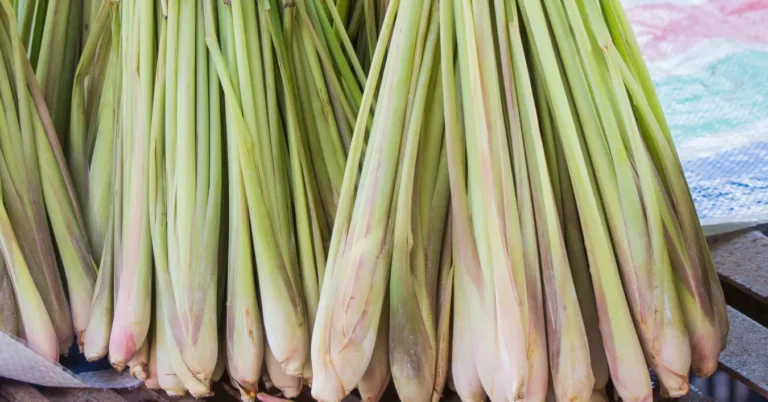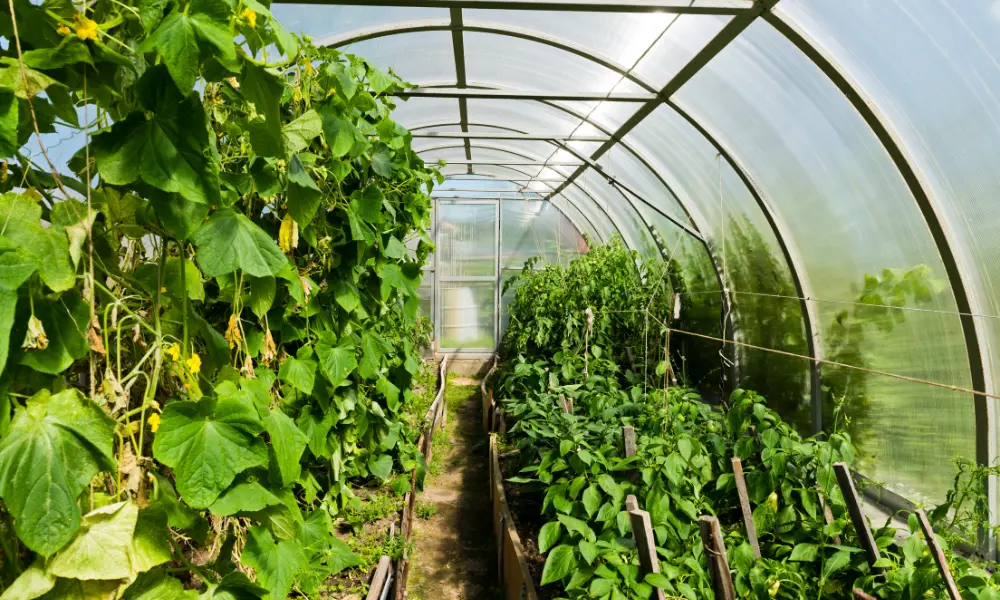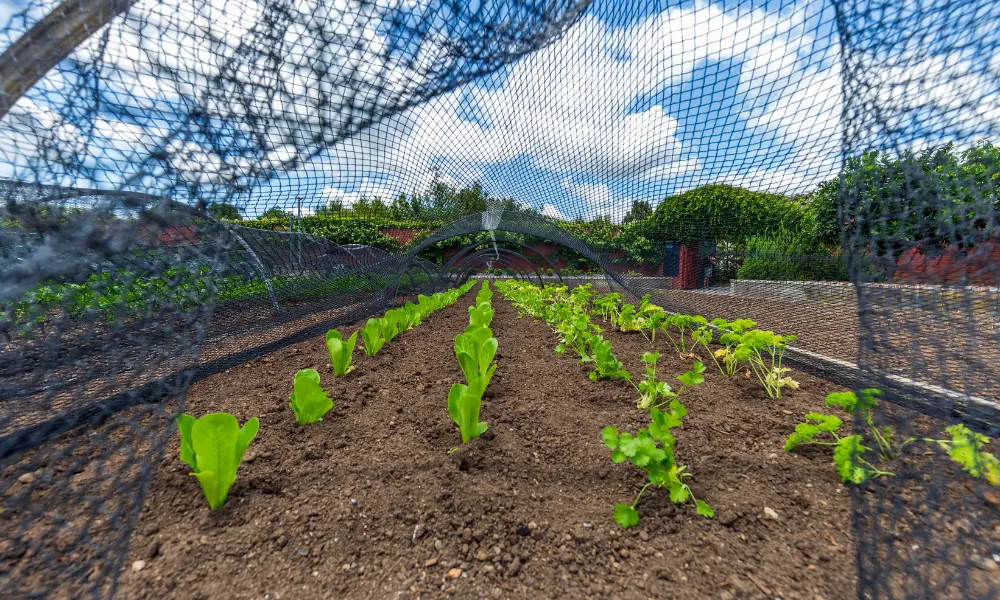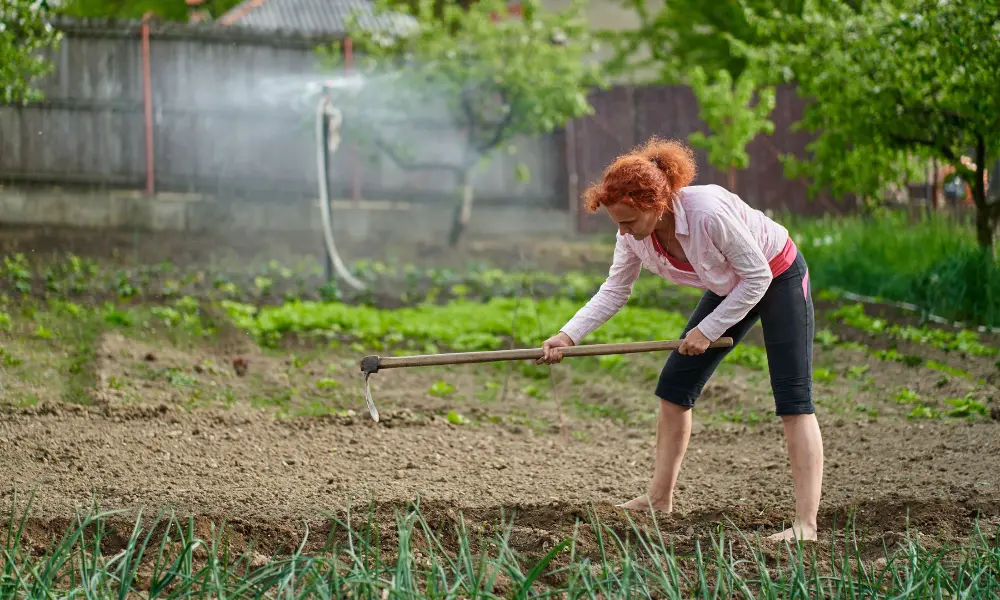Lemongrass plant, renowned for its delectable contribution to Thai soups and Indian curries, extends its versatility beyond the culinary realm. Its fragrant essence not only elevates body scrubs and aromatic soaps but also adds a touch of elegance to gardens, serving both aesthetic and practical purposes in landscaping.
Revitalizing your garden with lemongrass plant is a rewarding and beneficial endeavor. From natural mosquito repellent to culinary uses, lemongrass offers a wide range of benefits. In this ultimate guide, we will explore the benefits of growing lemongrass plants, creating a lemongrass garden, and harvesting and using lemongrass in various ways.
Lemongrass, a tropical herb, boasts a potent citrus taste, highly valued in Asian cuisine, teas, sauces, and soups. In gardens, it grows into a tall, grassy clump reaching 3 to 5 feet. Its visual appeal competes with ornamental grasses, serving a similar purpose in landscaping.
Key Takeaways:
⦿ Lemongrass plants act as a natural mosquito repellent, making them a valuable addition to any garden.
⦿ The medicinal uses of lemongrass are diverse, ranging from digestive health to stress relief and more.
⦿ Aromatherapy benefits of lemongrass provide a calming and refreshing atmosphere in your garden and home.
⦿ Choosing the right location and preparing the soil are crucial steps in creating a thriving lemongrass garden.
⦿ Proper harvesting techniques and culinary uses allow you to enjoy the flavorful and aromatic qualities of lemongrass in your cooking.
Growing Lemongrass from Seed
Lemongrass, a plant that’s quite friendly to beginners, sprouts swiftly when grown from seed—usually within a couple of weeks. To enhance your chances of success, plant the lemongrass seeds just below the soil, approximately 1/16 of an inch down. The catch is they require light for germination, so bury them ever so slightly.
Avoid letting the seeds dry out during this crucial phase, as it could halt the germination process. A nifty trick is placing a transparent cup over the seed, creating a little microenvironment that retains both moisture and heat. Alternatively, consider cultivating your seeds in a petite greenhouse, maintaining a humid atmosphere.
Patience becomes the virtue in this venture, as lemongrass seeds typically take around 10 to 14 days to sprout. Once your green companions reach a height of 4 inches, it’s time to relocate them to a sunlit spot in your garden.
When moving lemongrass, ensure you preserve as many roots as you can. Dig deep into damp soil using a shovel to capture all the roots. After extraction, cut and divide the plants if needed.
Lemongrass Care Tips

Lemongrass, originating from tropical climates, thrives with abundant light, warmth, and moisture. Whether it graces your kitchen windowsill, thrives in a hydroponic setup, or flourishes outdoors, these conditions remain key.
Watering Wisdom
Being water-thirsty, lemongrass demands consistent moisture. Tropical resilience allows it to handle more water than non-tropical plants. Hydrate the soil as needed, ensuring adequate oxygenation for hydroponic growth, fostering robust roots.
Sunshine Abode
Thriving in warmth, lemongrass craves a sunny habitat. Whether under natural sunlight for six hours or beneath an indoor LED light, ensure this warmth to promote optimal growth.
Soil Selection
Choose well-draining sandy soil enriched with nitrogen for lemongrass prosperity. Steer clear of clay soils, and consider adding mulch to retain soil moisture, as advised by Nesvacil.
Fertilizing Formula
Maintain nitrogen levels with a slow-release fertilizer, adjusting the frequency based on the season. Harris suggests a weekly dose during summer, transitioning to monthly applications in colder months.
Trim and Tidy
Pruning serves a dual purpose of shaping and maintaining lemongrass health. Regularly trim 4 to 6 inches when the grass surpasses 1 foot. Harris recommends this practice for a vibrant and well-groomed lemongrass plant.
Benefits of Growing Lemongrass Plant
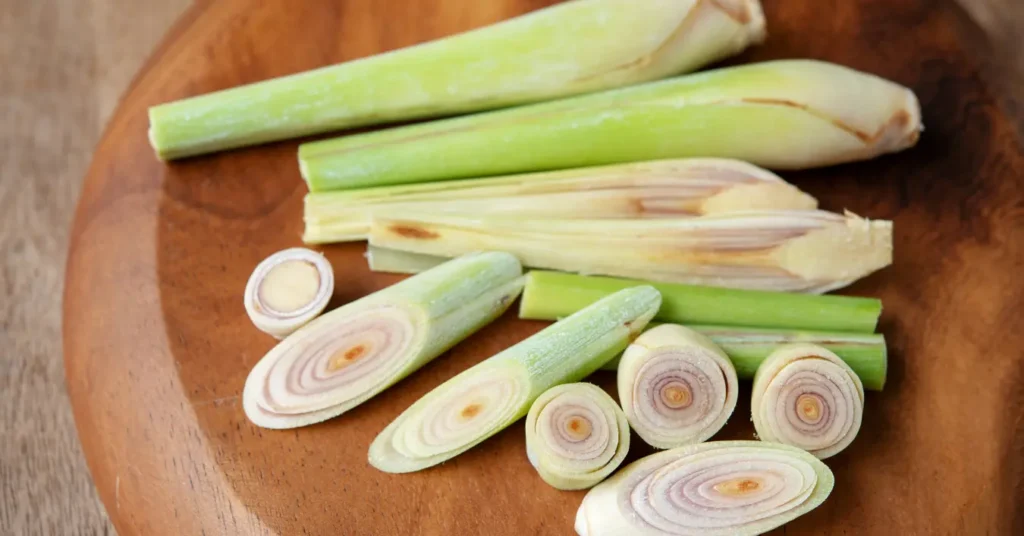
Natural Mosquito Repellent: One of the most delightful benefits I’ve discovered in growing lemongrass is its natural ability to repel mosquitoes. The citronella oil found in lemongrass is a powerful deterrent, making it an eco-friendly alternative to chemical repellents.
Here’s how I make the most of lemongrass’s repelling properties:
✔ Planting around the perimeter: I strategically place lemongrass plants around my outdoor living spaces, such as patios and decks.
✔ Companion planting: I also integrate lemongrass with other mosquito-repelling herbs like marigolds and peppermint for a more robust defense.
✔ Essential oil extraction: Occasionally, I distill my own lemongrass essential oil, which can be applied to the skin or used in diffusers.
By incorporating lemongrass into my garden, I’ve not only added beauty and fragrance but also created a natural barrier against mosquitoes. This has allowed me to enjoy my outdoor spaces more freely without the worry of bites or harsh chemicals.
Moreover, lemongrass serves multiple purposes beyond just repelling insects. It’s a culinary delight, a staple in aromatherapy, and even finds its way into my DIY skincare routines. Truly, lemongrass is a versatile plant that enhances my garden and my well-being.
Medicinal Uses
I’ve always been fascinated by the power of plants to heal and soothe. Lemongrass, in particular, has a storied history in traditional medicine, and I’ve personally found it to be a remarkable herb for various ailments. Its anti-inflammatory and analgesic properties make it a natural choice for pain relief, especially when it comes to headaches and digestive issues.
Lemongrass tea is my go-to remedy for when I’m feeling under the weather. The warmth and the herb’s natural compounds seem to work in tandem to provide a comforting effect.
Here’s a quick list of the medicinal benefits I’ve discovered with lemongrass:
⦿ Relief from cold and flu symptoms
⦿ Reduction in fever
⦿ Easing of stomach aches and gastrointestinal disorders
⦿ Assistance with insomnia
While the benefits are numerous, it’s important to remember that natural remedies can complement but not replace professional medical advice. Always consult with a healthcare provider before incorporating lemongrass into your wellness routine.
Aromatherapy Benefits
After exploring the natural pest-repelling and medicinal qualities of lemongrass, I’ve found its aromatherapy benefits to be equally remarkable. The soothing scent of lemongrass essential oil is known to promote relaxation and a sense of calm. It’s become a staple in my daily routine to unwind after a long day in the garden.
The fragrance of lemongrass can enhance mental clarity and uplift the mood, making it a perfect addition to any stress-relief regimen.
Here’s a simple list of ways to incorporate lemongrass into your aromatherapy practices:
⦿ Diffuse lemongrass oil in your living space for a refreshing and clean aroma.
⦿ Add a few drops to a warm bath for a spa-like experience at home.
⦿ Create a homemade room spray by mixing water, alcohol, and lemongrass oil.
⦿ Apply diluted lemongrass oil to your temples for a natural headache remedy.
By integrating lemongrass into your aromatherapy, you’re not just cultivating a garden; you’re nurturing your well-being.
Creating a Lemongrass Garden
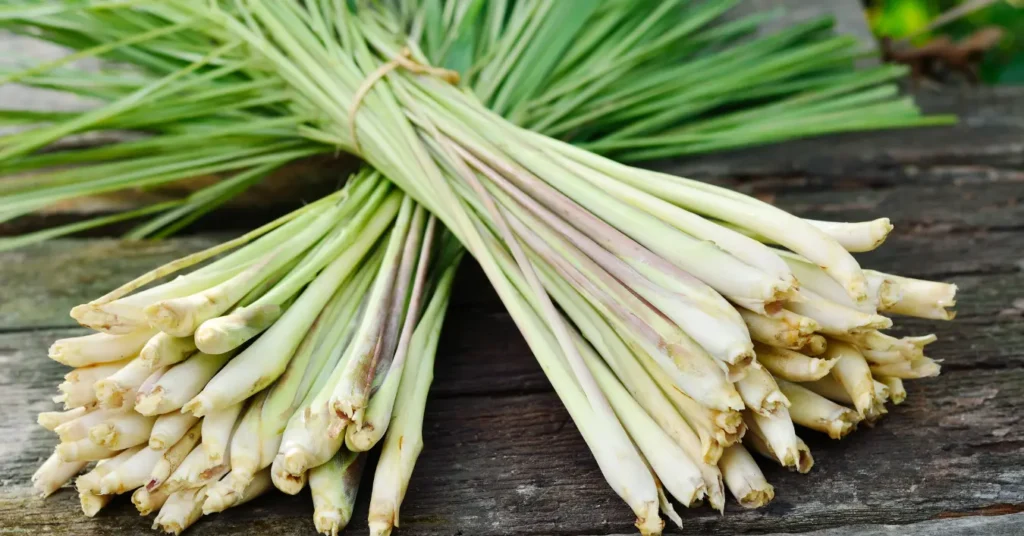
Choosing the Right Location: When I set out to create my lemongrass garden, I knew that finding the perfect location would be crucial for the plants to thrive. Lemongrass loves the sun, so I aimed for a spot that receives ample sunlight throughout the day.
Here’s a quick checklist I followed:
⦿ Full sun exposure for at least 6 hours a day
⦿ Well-drained soil to prevent waterlogging
⦿ Proximity to my house for easy maintenance
⦿ Sufficient space for the plants to grow without crowding
Ensuring the right location not only promotes healthy growth but also maximizes the aromatic presence of lemongrass in my garden, making it a delightful sensory experience.
I also considered the microclimate of my yard, as lemongrass prefers a warm and sheltered environment. By placing it in a location that shields it from harsh winds, I’ve managed to create a cozy nook for my plants. Remember, the effort you put into selecting the right spot pays off with lush, fragrant lemongrass that can be enjoyed all season long.
Soil Preparation
Preparing the soil for my lemongrass plants is a crucial step that sets the stage for healthy growth. The ideal soil pH for lemongrass is between 6.5 and 7.5, and I can adjust the pH by adding sulfur or peat moss to increase acidity, or lime to decrease it.
Here’s a simple checklist I follow to ensure the soil is ready:
⦿ Clear the area of rocks, roots, and debris
⦿ Use a pointed shovel to dig and remove unwanted materials
⦿ Break up hardened soil chunks
⦿ Cart away the debris in a wheelbarrow
⦿ Fill the holes with fertile topsoil
Before planting, I make sure the soil is fertile, aerated, and moderately moist. Fertilizing the soil a week before sowing is essential. I mix in a quality lawn fertilizer according to the manufacturer’s instructions to give my lemongrass the best start.
Lastly, rolling the soil to create a level surface is an important step that should not be overlooked. This helps to ensure that water is distributed evenly and that the lemongrass roots can penetrate the soil effectively.
Planting and Watering
After selecting the perfect spot and preparing the soil, it’s time to plant my lemongrass. I make sure to space the stalks about 24 inches apart to give them ample room to flourish. Proper watering is crucial; lemongrass loves moisture but cannot tolerate soggy soil. I’ve found that a balanced approach is key, providing enough water to keep the soil slightly damp.
Consistency in watering is essential, especially during the establishment phase. Once the roots have taken hold, lemongrass becomes quite hardy, relying on natural rainfall and atmospheric moisture.
To manage my garden’s hydration needs efficiently, I’ve adopted a simple irrigation schedule:
⦿ Week 1-2: Water daily, unless there is significant rainfall.
⦿ Week 3-4: Reduce watering to every other day.
⦿ Week 5 onwards: Taper off to twice a week, adjusting for weather conditions.
This schedule helps my lemongrass develop a strong root system while preventing water waste. As the plants mature, I pay close attention to their appearance and the soil’s moisture level to guide my watering routine.
Harvesting and Using Lemongrass
Harvesting Techniques: When the time comes to harvest my lemongrass, I’ve found that timing and technique are crucial for the best yield. Harvesting should be done just before the plant reaches its flowering stage, as this is when the stalks are most flavorful and aromatic. I gently grasp the base of the stalk and twist it, pulling it from the soil with a firm tug.
Lemongrass shines in Asian dishes, particularly Thai and Vietnamese. For cooking, use the tender inner stalk bases in stir-fries, salads, and sauces. To freeze, slice and store in zipper-seal bags, breaking off what you need later. Alternatively, freeze minced or puréed lemongrass.
The leaves aren’t to be ignored – they elevate marinades and make a delightful tea when steeped in hot water. Post-use, toss the leaves into compost or puree them to deter insects around your outdoor spaces. If you prefer dried leaves, bundle and hang them upside down in a dark spot until dry. Seal in jars for a year-long flavor reserve.
Here’s a simple guide to ensure you get it right:
⦿ Identify mature stalks, which are about half an inch thick.
⦿ Cut the stalks at ground level using a sharp knife or shears.
⦿ Leave at least 4-6 inches of the stalk to promote regrowth.
Remember, lemongrass can be quite tough, so don’t be afraid to apply a bit of force. However, be mindful not to damage the roots or the remaining shoots.
After harvesting, I like to strip away the outer layers, which can be tough and fibrous, revealing the tender heart of the stalk. This part is perfect for culinary uses or can be dried for teas and infusions. The leaves, too, shouldn’t be discarded; they make a wonderful addition to broths and soups, imparting a subtle citrus flavor.
Culinary Uses
Once my lemongrass plants reached maturity, I was eager to incorporate their fresh, citrusy flavor into my cooking. Lemongrass is a versatile herb that can elevate a variety of dishes, from soups and curries to teas and cocktails.
⦿ Soups: Adds a fresh, lemony zing to broths and stews.
⦿ Curries: Infuses a subtle citrus note to both meat and vegetable curries.
⦿ Teas: Makes a soothing, aromatic herbal tea, perfect for relaxation.
⦿ Cocktails: A unique ingredient for refreshing summer drinks.
One of my favorite ways to use lemongrass is by finely chopping the tender inner stalks and adding them to marinades. The herb imparts a unique flavor that’s particularly great with chicken or fish. Experimenting with lemongrass in the kitchen has not only been a delightful culinary journey but also a cost-effective way to enhance my meals.
Lemongrass Plant Issues: What to Watch For
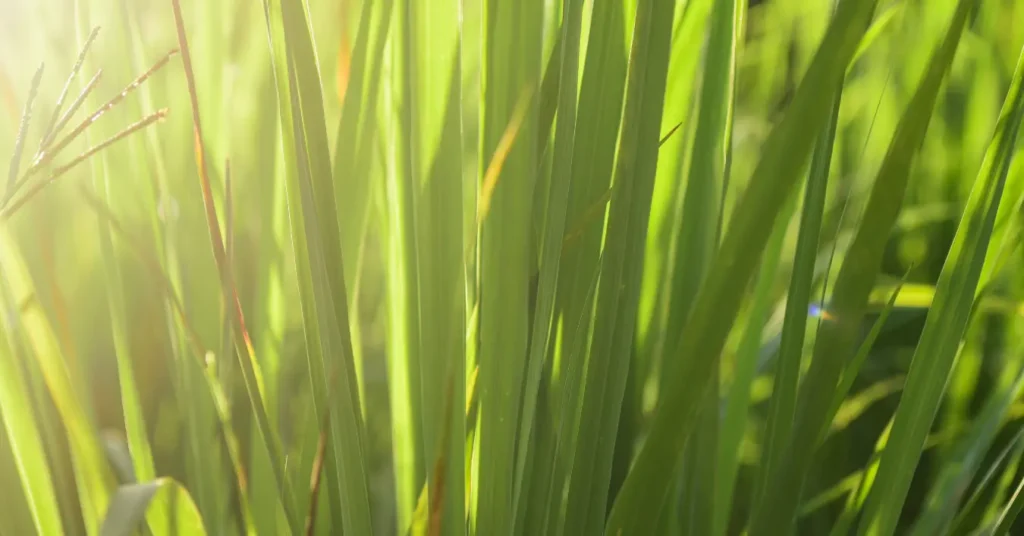
Lemongrass plants, like any green companions, can face challenges from garden troubles. Fertilizing aids in robust growth, while timely pruning fends off diseases and discards lifeless leaves. Keep an eye out for these red flags indicating your lemongrass demands extra TLC.
Mold Concerns
Moisture abundance often invites mold, manifesting predominantly at the crown’s base. For indoor cases, enhance ventilation and monitor humidity; for outdoors, reduce watering while vigilantly observing. Eliminate any moldy blades to curb further spread. Alternatively, a diluted hydrogen peroxide spray can effectively combat mold, suggests Harris.
White Spots Intrusion
Despite lemongrass’s mosquito-repelling prowess, it’s not impervious to insects. Spider mites, known for leaving webs and causing white spots, might visit based on your locale and the season. Vigilance is key, and addressing the issue promptly is crucial to maintain plant health, notes Harris.
Brown, Droopy Leaves
Despite lemongrass’s affinity for moisture, excessive watering can lead to brown, drooping leaves—a clear sign of hydration overdose. Adjust the watering routine accordingly. If rain persists, relocating the plant indoors offers a chance for recovery.
Brittle Leaf
While sunlight is vital, lemongrass can suffer from an excess of direct exposure. The leaves may dry up and become brittle. Harris suggests remedies like tenting the plant with plastic to mimic a greenhouse effect or transitioning it indoors with LED grow lights for a healthier balance.
DIY Projects with Lemongrass
After enjoying the delightful aroma and the lush greenery of my lemongrass plants, I’ve found that they offer so much more beyond their culinary uses. DIY projects with lemongrass can transform your home into a serene oasis.
Here are a few of my favorite ways to use this versatile herb:
⦿ Lemongrass-infused oils: Perfect for massages or as a moisturizing agent, these oils carry the refreshing scent of lemongrass and its soothing properties.
⦿ Homemade lemongrass candles: Crafting candles with lemongrass essential oil not only fills the room with a calming aroma but also helps in repelling mosquitoes.
⦿ Natural cleaning solutions: Adding a few drops of lemongrass oil to your cleaning products can leave your home smelling fresh and clean.
Embracing the DIY spirit with lemongrass has not only been a delightful hobby but also a step towards a more natural and sustainable lifestyle. The satisfaction of using something grown with my own hands is incomparable.
Moreover, I’ve discovered that lemongrass can be a key ingredient in creating a personal spa experience. From bath bombs to scrubs, the possibilities are endless. It’s truly rewarding to see how a simple garden plant can elevate our daily routines and contribute to our well-being.
Bonus Read
To start, plant lemongrass in spring after the threat of frost is gone. It thrives when grown directly in the ground or in containers, much like ornamental grasses. For optimal growth, choose a sunny spot with well-drained soil (pH 6.5 to 7.0) and space plants 24 inches apart. Boost the growing season by incorporating aged compost or rich organic matter into your native soil.
Keep lemongrass content with consistent moisture; water when the top inch of soil dries out. Enhance your efforts by regularly feeding it with water-soluble plant food. When lemongrass plants reach a height of 12 inches and have a base width of half an inch, it’s time to harvest the stalks.
Revitalizing your garden with lemongrass plants is a rewarding and beneficial endeavor. From repelling mosquitoes to adding a refreshing aroma to your garden, lemongrass plants offer a multitude of benefits. With the right care and attention, your garden can flourish with the vibrant presence of lemongrass. So, roll up your sleeves and get ready to transform your garden into a thriving oasis of greenery and fragrance.
